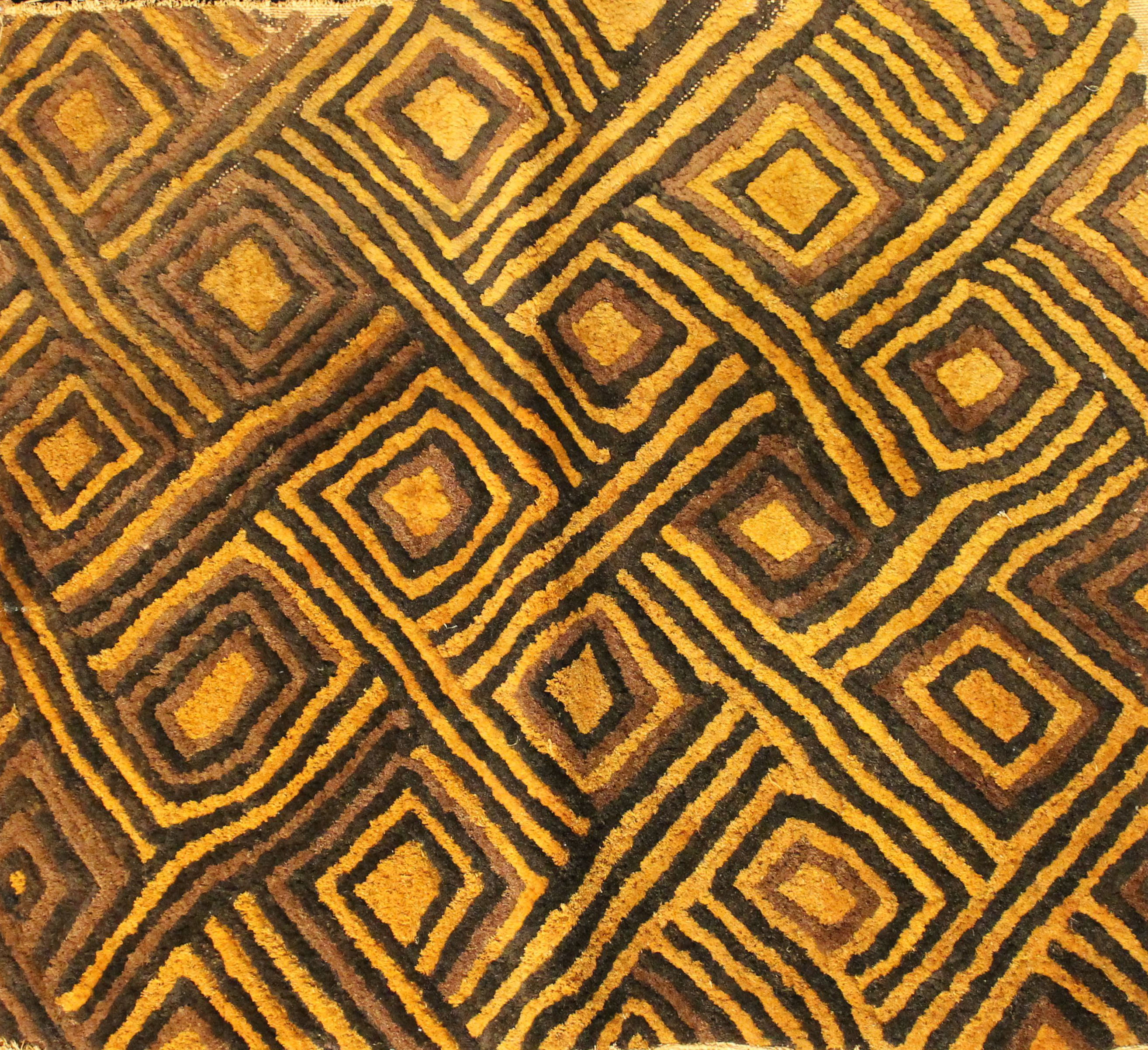Project Description
This textile, created in the Kuba Kingdom of what is now the Democratic Republic of the Congo, shows off the complexity of design that the Kuba Kingdom was known for in their textiles. The Kuba Kingdom was highly prosperous, uniting 19 different ethnic groups between the early seventeenth century and mid-nineteenth century. The cloth had many ceremonial purposes, originating in funerary practices but soon expanding to other religious and cultural ceremonies. To make the cloth, Kuba men would harvest raffia palms and weave them on an inclined, single-heddle loom. When the cloth is first taken from the loom, it is stiff and must be pounded in a mortar to become pliable. After being pounded, the cloth is either used for utilitarian clothes or handed over the women for embellishment. With the base cloth, women would embroider fine designs as well as use appliqué and reverse appliqué techniques. The embroidery techniques used by Kuba women involved taking out and reworking parts of the warp and weft, meaning there are no knots in the embroidery and the pattern is barely visible on the reverse side. Textiles like Kuba cloth rarely survive longer than a century, therefore we take special care to keep this one in good shape. Though the cloth is traditionally dyed with mud or sheep faeces, modern dye methods have been introduced, allowing for this rich golden color. This Kuba cloth comes to us from Ambassador Franklin Williams, a fervent supporter of intercultural education.

